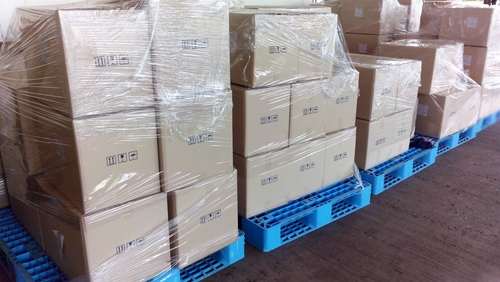
Pallets are some of the most important materials in the shipping industry. They’re available in materials like plastic, wood and steel, and they come in an array of different sizes. You can always ask the professionals for help, but it’s up to you to figure out which size pallet makes the most sense for your company. Once you learn what there is to know about pallets and their configurations, you’ll be able to make an informed decision.
There are a few key elements to think about when you start looking at pallet sizes. There may already be a popular pallet size for your industry, but you also have to think about the space you have, the products you ship and the pros and cons of working with different size pallets. Continue reading and find out how to pick your pallet size with confidence.
- Consider Your Industry—If you’re wondering what size pallet suits your business best, start by thinking about the industry. Many businesses in the same industry tend to use the same types of pallets. This is because the size and shape of the pallet corresponds to the sizes and shapes of the boxes being stored on it. If you have square crates of dairy, for example, you may be best suited with a square pallet. Smaller products and shipping materials mean less demand for space on the surface of the pallet, especially when you can stack your bins. If your business sells large products like automobile parts, you might have a need for a bigger pallet.
- When to Go Small—Just like downsizing your living space or driving a more compact car, going smaller is sometimes the right call. In some cases, using large pallets ends up being wasteful or inconvenient. If you have a small warehouse, smaller plastic pallets are easier to handle. Moving pallets through doors, finding room for them amongst the inventory and storing them when they’re not in use are all easier tasks when your pallets are of the appropriate size. Businesses also benefit from small pallets if they ship in low quantities or have small inventory to transport. Don’t splurge for big pallets if you know you’re not going to fill them.
- Importance of Shape—If you have a narrow space, you might want longer, rectangular pallets instead of perfect squares that might leave unusable room. The most popular kind of pallet is a 48” x 40” rectangle, and they’re great for grocery warehousing, bulk bottle storage and transport and exports. When it comes to loading up the truck as fully as possible to reduce expenses, it helps when your pallets can lock in next to each other.

- Storage and Efficiency—Knowing your space is crucial. While larger pallets can store more on top of them, they may be more difficult to store in your warehouse. Smaller pallets come with the opposite tradeoff. If you have a massive space to store your goods and shipping materials, and you have a need for larger pallets, then you should be in the clear. If you’re a younger business with smaller shipping needs, small pallets are more efficient.
- Popular Options—Pallets come in a range of sizes but some stand out as popular options for all kinds of businesses. The one pallet configuration that comes out on top even has its own name: Grocery Manufacturers’ Association This 48” x 40” pallet is one of the most common choices for American production, and it’s among five other standard sizes that the International Organization for Standardization recognizes. Although there are six standard sizes recognized by the organization, the shipping industry does not standardize or regulate the size of pallets.
You don’t want to realize that you miscalculated and purchased pallets of the wrong size, so don’t forget to do your research before you buy your materials. Finding out what size pallets other businesses in the industry use will point you in the right direction but also consider the size and layout of your warehouse.
